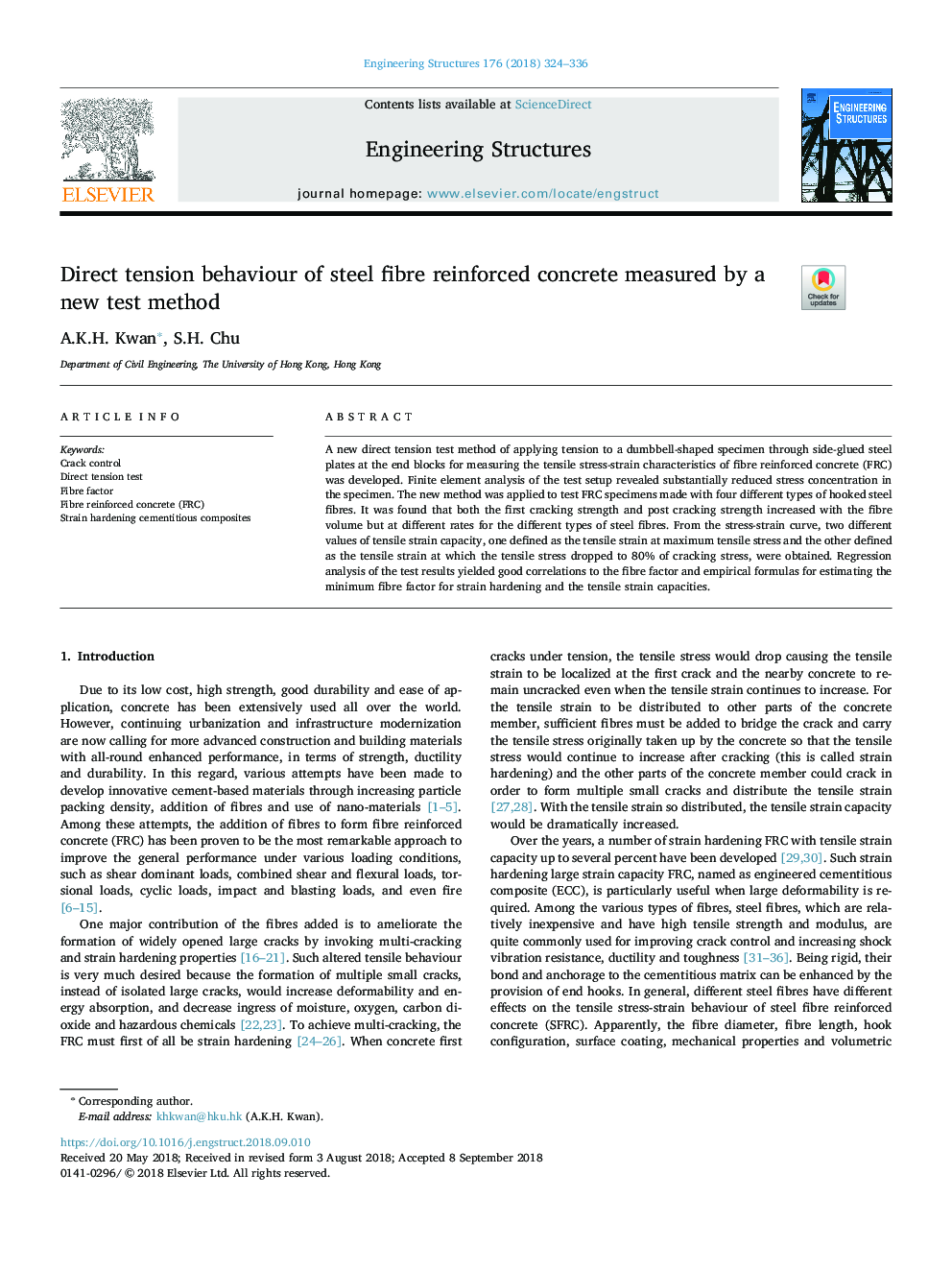| Article ID | Journal | Published Year | Pages | File Type |
|---|---|---|---|---|
| 10148832 | Engineering Structures | 2018 | 13 Pages |
Abstract
A new direct tension test method of applying tension to a dumbbell-shaped specimen through side-glued steel plates at the end blocks for measuring the tensile stress-strain characteristics of fibre reinforced concrete (FRC) was developed. Finite element analysis of the test setup revealed substantially reduced stress concentration in the specimen. The new method was applied to test FRC specimens made with four different types of hooked steel fibres. It was found that both the first cracking strength and post cracking strength increased with the fibre volume but at different rates for the different types of steel fibres. From the stress-strain curve, two different values of tensile strain capacity, one defined as the tensile strain at maximum tensile stress and the other defined as the tensile strain at which the tensile stress dropped to 80% of cracking stress, were obtained. Regression analysis of the test results yielded good correlations to the fibre factor and empirical formulas for estimating the minimum fibre factor for strain hardening and the tensile strain capacities.
Keywords
Related Topics
Physical Sciences and Engineering
Earth and Planetary Sciences
Geotechnical Engineering and Engineering Geology
Authors
A.K.H. Kwan, S.H. Chu,
